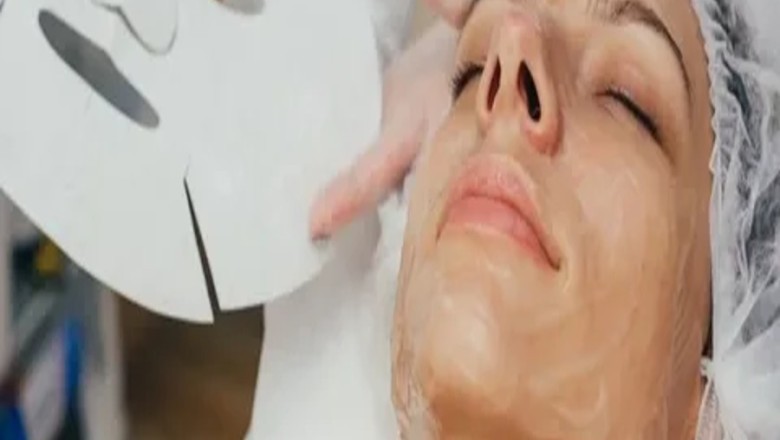views
What is Carboxy Therapy?
Carboxy therapy, also known as carbon dioxide therapy, is a nonsurgical procedure that uses carbon dioxide gas to treat cellulite and stretch marks on the skin. During the treatment, carbon dioxide gas is injected into the deeper layers of the skin using a thin needle. The carbon dioxide stimulates the production of new collagen and elastin in the skin, which helps improve the appearance of cellulite dimples and stretch marks over time.
How Does it Work?
When Carboxy Therapy is carbon dioxide gas is injected into the skin, it creates a slight metabolic perturbation in the treated area. This perturbation triggers the body's natural wound healing response and stimulates new collagen and elastin production. The carbon dioxide also improves blood circulation in the injected areas. Improved circulation helps carry away toxins and excess fluids trapped in the fatty tissues that cause the dimpled appearance of cellulite. It also brings more oxygen and nutrients to promote the skin's natural repair and rejuvenation processes. With repeated treatments, the collagen production firms and tightens the skin over cellulite dimples and the elasticity is improved, resulting in smoother and firmer looking skin.
Does it Really Work for Cellulite and Stretch Marks?
Numerous clinical studies have demonstrated carboxy therapy's effectiveness in improving the appearance of cellulite and reducing the visibility of old stretch marks.
Some key findings from studies include:
- A study published in the Aesthetic Plastic Surgery journal found that 86% of patients experienced a significant reduction in the appearance of cellulite after 6 to 10 sessions of carboxy therapy. Ultrasound scans also showed a noticeable thickening of collagen and elastic fibers in the treated dermal and subcutaneous layers.
- A clinical trial involving 30 women with cellulite on the thighs found that over 80% of patients reported visible reduction and smoothing of cellulite after just 6 weekly sessions. Ultrasound confirmed a tightening effect on the skin.
- Research presented at the 64th Annual scientific meeting of the AAD found that carboxy therapy led to an average 37.5% improvement in the appearance of old stretch marks after 6 weekly treatments. 81% of patients rated the results as good or excellent.
- A review of 27 studies and over 1500 carboxy therapy patients concluded it is a safe and effective nonsurgical method to improve skin laxity and the appearance of cellulite and scars. Multiple treatments were needed to achieve and maintain optimal results.
What Can Be Expected from Carboxy Therapy?
While individual results may vary, most patients see a gradual improvement in their skin with carboxy therapy. It works best on cellulite that is in the early to moderate stage rather than severe cases. Following the recommended course of 6-12 weekly or biweekly treatments allows the body to replenish depleted collagen and elastin. Notable improvements may be visible after 3-6 sessions, with optimal results seen after completing the full course of treatments.
While the dimpled texture of cellulite may not disappear completely, most patients report a smoother skin appearance and feel. Stretch marks usually flatten and fade noticeably. The effects of a single treatment series usually last 6-12 months before monthly touch-up sessions are recommended to maintain results. A healthy diet and lifestyle also supports the skin's regeneration. Carboxy therapy provides a minimally invasive solution to address stubborn skin issues like cellulite and striae without extensive downtime.
Is the Procedure Painful?
Most patients describe the sensation of carboxy therapy injections as mild pressure or a brief stinging feeling. It is generally not considered a painful procedure. The skin may feel slightly tender after treatment but discomfort quickly dissipates. No bruising, swelling or scarring occurs from the small injection sites. No anesthetic is needed either. Overall, patients tolerate the in-office treatments well without significant side effects. Mild headaches, nausea or dizziness may occasionally occur but usually respond to hydration. With its favorable safety profile, carboxy therapy poses very little risks when administered by a trained professional.
Who Makes a Good Candidate?
Nearly anyone bothered by the appearance of cellulite or stretch marks can benefit from carboxy therapy. The best candidates usually have early to moderate cases that have not responded well to creams and lotions alone. Those in good general health without uncontrolled medical conditions fare the best. Pregnancy and breastfeeding are contraindications until after weaning. Carboxy therapy delivers natural-looking rejuvenation without major restrictions, making it a go-to nonsurgical solution for most.
Carboxy therapy exploits the skin's innate healing responses using painless CO2 injections to stimulate collagen and elastin production from within. Numerous clinical trials and case studies demonstrate its effectiveness in improving the texture and tone of cellulite-prone skin as well as reducing the visibility of stretch marks. With minimal risks or downtime, it provides a simple yet potent approach to achieve more toned, rejuvenated looking skin without invasive procedures. Multiple treatments spaced 1-2 weeks apart helps maintain ongoing progress. For those hoping to smooth the appearance of stubborn skin imperfections, carboxy therapy could be a wise non-surgical investment.
Explore More Related Article On- Blood Glucose Test Strip Market
For Deeper Insights, Find the Report in the Language that You want.
About Author:
Ravina Pandya, Content Writer, has a strong foothold in the market research industry. She specializes in writing well-researched articles from different industries, including food and beverages, information and technology, healthcare, chemical and materials, etc. (https://www.linkedin.com/in/ravina-pandya-1a3984191)






















Comments
0 comment